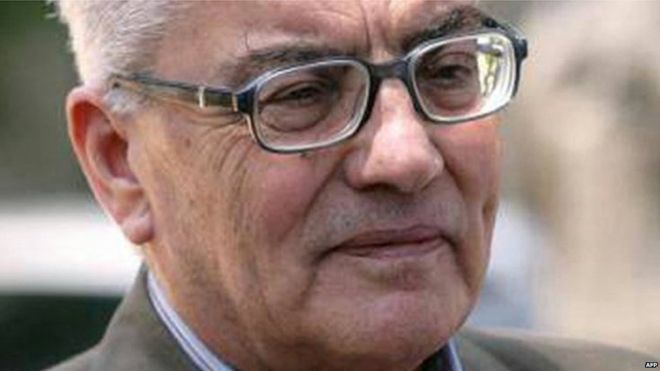Islamic State Executes Antiquities Chief Of Palmyra, Heritage Under Threat
Asaad - executed by ISIS
NEW DELHI: The Islamic State, which sent shockwaves when it captured the ancient city of Palmyra, has tortured and executed the city’s antiquities chief, who spent more than 50 years looking after Palmyra’s culturally invaluable artefacts.
Graphic images posted by IS affiliated social media accounts seem to show the decapitated body of 82-year-old Khaled Asaad, his trademark glasses still visible on his head on the ground.
The head of the Syrian department of antiquities said that the militants took Assad’s dead body from the square and hung it from a Roman column that the former antiquities chief had dedicated his life to restoring.
A sign attached to the pictures being circulated online states that Asaad was executed for overseeing “idols” in Palmyra, attending “infidel” conferences and for staying in touch with his brother and palace officials even after IS took over.
Asaad, it appears, had been taken captive by the militants who had been interrogating him for at least the past month. Media reports indicate that the militants tried to furnish information from Asaad about Palmyra’s hidden treasures, and his refusal to provide this information is what prompted his sudden execution.
The fate of Palmyra’s artefacts has been a cause of worldwide concern ever since Islamic State militants captured the city in May. Since then, the militant have reportedly killed 200 people, including civilians, in and around Palmyra.
Here is a look at the cultural richness of Palmyra which stands threatened.
Temple of Baal-Shamin, Palmyra
Dedicated in 131, the temple of Baalshamin has been called Palmyra's "most significant surviving temple other than that of Bel". Baalshamin or Ba'al Šamem[2] (Aramaic: ??? ????), lit. 'Lord of Heaven(s)', is a Northwest Semitic god and a title applied to different gods at different places or times in ancient Middle Eastern inscriptions, especially in Canaan/Phoenicia and Syria. The title was most often applied to Hadad, who is also often titled just Ba‘al. Baalshamin was one of the two supreme gods and the sky god of pre-Islamic Palmyra in ancient Syria. (Bel was the other supreme god.) There his attributes were the eagle and the lightning bolt, and he perhaps formed a triad with the lunar god Aglibol and the sun god Malakbel.
Gate of the fortified Temple of Bel
Center of Bel
The Temple of Baal (Arabic: ???? ??) is an ancient stone ruin located in Palmyra, Syria. The temple, consecrated to the Semitic godBaal, worshipped at Palmyra in triad with the lunar god Aglibol and the sun god Yarhibol, formed the center of religious life in Palmyraand was dedicated in 32 CE.[1][2] Aedeen Cremin considers its ruins the "best preserved" at Palmyra.[3]
Lion in the garden of Palmyra Archeological Museum
Grande collonade street
The Great Colonnade at Palmyra was the main colonnaded avenue in the ancient city of Palmyra in the Syrian Desert. The colonnade was built in several stages during the second and third century CE and stretched for more than a kilometer. It linked theTemple of Bel, in the southeastern end of the city, to the West Gate and the Funerary Temple in the northwestern part.
Palmyra theater
Diocletian's Camp, Palmyra
Hadrian's Gate
This arch is named for the Roman emperor who visited Palmyra in 129 A.D. and conferred upon it the status of a "free" metropolis within the empire.
Qalat ibn maan
View of Palmyra
The tariff court





